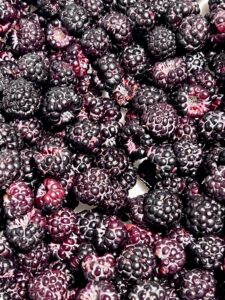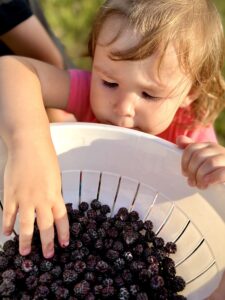Local Treat | Wild Blackcaps
go.ncsu.edu/readext?871077
en Español / em Português
El inglés es el idioma de control de esta página. En la medida en que haya algún conflicto entre la traducción al inglés y la traducción, el inglés prevalece.
Al hacer clic en el enlace de traducción se activa un servicio de traducción gratuito para convertir la página al español. Al igual que con cualquier traducción por Internet, la conversión no es sensible al contexto y puede que no traduzca el texto en su significado original. NC State Extension no garantiza la exactitud del texto traducido. Por favor, tenga en cuenta que algunas aplicaciones y/o servicios pueden no funcionar como se espera cuando se traducen.
Português
Inglês é o idioma de controle desta página. Na medida que haja algum conflito entre o texto original em Inglês e a tradução, o Inglês prevalece.
Ao clicar no link de tradução, um serviço gratuito de tradução será ativado para converter a página para o Português. Como em qualquer tradução pela internet, a conversão não é sensivel ao contexto e pode não ocorrer a tradução para o significado orginal. O serviço de Extensão da Carolina do Norte (NC State Extension) não garante a exatidão do texto traduzido. Por favor, observe que algumas funções ou serviços podem não funcionar como esperado após a tradução.
English
English is the controlling language of this page. To the extent there is any conflict between the English text and the translation, English controls.
Clicking on the translation link activates a free translation service to convert the page to Spanish. As with any Internet translation, the conversion is not context-sensitive and may not translate the text to its original meaning. NC State Extension does not guarantee the accuracy of the translated text. Please note that some applications and/or services may not function as expected when translated.
Collapse ▲
If you look closely, you can see the hollowed out center. This is how you know you have a raspberry instead of a blackberry.
Early summer is one of my favorite times of the year.
Our house sits on land surrounded by creeks, trails, and a short road that connects our holler to the rest of the county. Now, imagine the areas surrounding our house lined with patches of arching brambles hanging with berries varying in color from green, to red, to purplish-black. These berries are locally known as black raspberries or blackcaps. Scientifically, they are known as Rubus occidentalis.
If you aren’t sure if your bramble is a blackberry or a raspberry, simply pull one off. If pulling the berry creates a hollowed out center in the fruit, you have a raspberry. If there’s an edible core when pulled off the stem, you have a blackberry.

My youngest going in for more “wasbewwies”.
Blackcaps are a wild, thorny shrub and are not often grown commercially due to their lower fruit yield. The dark pigments in these berries, also known as anthocyanins, make them rich in antioxidants. Regularly adding foods rich in antioxidants to a diet has many health benefits. Reducing inflammation, reducing type 2 diabetes, and lowering the chances of heart disease are just a few examples of what these little purple berries can do.
Although the blackcap brambles may not produce as many berries as others, if you find a larger patch, you’ll be able to pick enough to experiment with in the kitchen.
Blackcaps can be used in almost any recipe calling for red raspberries. The berries are seedier than other varieties, so keep that in mind when cooking with them. If you are patient, you can mash and strain the fruit enough to eliminate the bulk of the seeds. My favorite way to eat them is in jelly form on a warm, flaky biscuit. My neighbor prefers them scattered around on a bowl of ice cream. My girls enjoy them straight out of the bucket on the walk back to the house.
Now that you know what to look for and what to do with them, grab a bucket, a long-sleeved shirt, your best bug spray, your family, and go foraging for these yummy berries. If you find a recipe that you love or a new creative way to use the berries, let us know!
NC State University’s Extension Gardener Handbook contains much more information on the bramble family, and you can quickly go to Google for all sorts of recipes utilizing the berries. Follow us on Facebook or Instagram for more helpful information!




